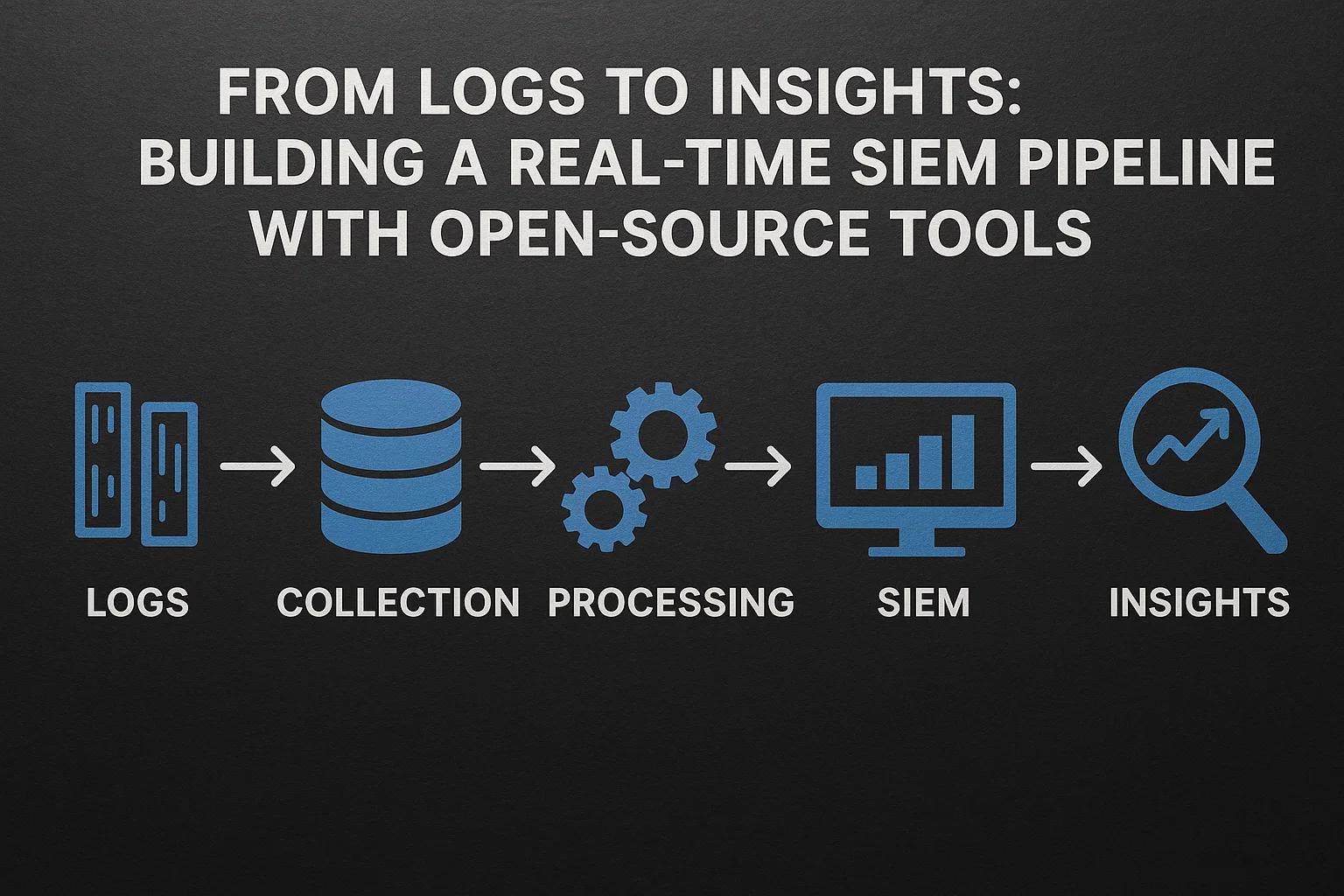From Logs to Insights: Building a Real-Time SIEM Pipeline with Open-Source Tools
Harness the power of your data without breaking the bank

Building a security information and event management (SIEM) pipeline doesn’t have to break the bank. This introduction highlights the advantages of using open-source tools to collect, process, and visualize logs in real time. Security information and event management (SIEM) systems help you detect threats in real time, but commercial solutions can be expensive. Fortunately, open-source tools like Elasticsearch, Logstash, and Kibana make it possible to build your own powerful pipeline on a budget.
1 Collecting Logs
Start by aggregating logs from servers, applications, and network devices. Filebeat or Fluentd are lightweight agents that forward data to a central queue. Normalizing log formats early simplifies downstream analysis.
2 Storing and Searching Data
Elasticsearch provides scalable storage and fast search capabilities. Configure Logstash to parse incoming logs and enrich them with metadata like geolocation or threat intelligence feeds. You can then run queries to uncover anomalies and suspicious patterns.
3 Visualizing and Alerting
Kibana turns raw log data into dashboards, enabling you to track trends and quickly identify issues. With plugins like ElastAlert, you can define rules that trigger notifications when certain conditions are met—an essential step for timely incident response.
4 Continuous Improvement
As your pipeline matures, refine parsing rules, experiment with machine learning features, and consider automating response actions. The modular nature of open-source tools means you can scale horizontally and integrate new components as needed. With a real-time SIEM in place, you’ll turn log files into actionable insights and keep your infrastructure secure.
5 Historical Background
Early SIEM systems emerged in the 2000s to centralize security logs, but they were often costly and complex. The open-source movement gave smaller organizations access to similar capabilities. Projects like the Elastic Stack democratized logging and analysis, leading to community-driven improvements and plugins.
6 Pros and Cons
Pros
- Cost-effective compared to commercial solutions
- Highly customizable thanks to open-source code
- Large community support for plugins and troubleshooting
Cons
- Requires in-house expertise to deploy and maintain
- May lack some advanced features found in enterprise products
7 Quick Start Checklist
- Deploy agents like Filebeat to forward logs securely.
- Set up Elasticsearch with replication for reliability.
- Build dashboards in Kibana for key metrics.
- Configure alerting to notify responders within minutes of anomalies.
8 Conclusion
Open-source SIEM pipelines put advanced monitoring within reach. By understanding the history, weighing trade-offs, and following a structured setup plan, you can build a system that rivals commercial offerings without draining your budget.
9 Historical Background
Before the rise of open-source stacks, organizations relied on expensive proprietary solutions for log management. The advent of tools like Elasticsearch, Logstash, and Kibana democratized access to real-time analytics, allowing even small teams to build sophisticated monitoring systems.
10 Pros and Cons
Open-source SIEM solutions are highly customizable and cost-effective. The trade-off is that they require more hands-on maintenance and expertise. Community support is strong but not the same as vendor-backed warranties.
11 Actionable Steps
- Start with a proof-of-concept deployment on a small subset of systems.
- Use containers or virtual machines to simplify upgrades and scaling.
- Integrate alerting mechanisms early to ensure you respond quickly to anomalies.
12 Scaling Considerations
As log volume grows, consider sharding Elasticsearch clusters and using message queues like Kafka. Regularly review index management policies to avoid runaway storage costs.
13 Conclusion
A real-time SIEM pipeline built from open-source components offers flexibility and control. With careful planning, you can adapt the system to evolving security needs without committing to costly licenses.
14 Community Resources
Numerous online communities share configurations and dashboards for open-source SIEM tools. Participating in forums and GitHub projects accelerates learning and provides troubleshooting help when challenges arise.
15 Final Thoughts
Open-source SIEM pipelines require ongoing care, but they reward you with visibility into threats and system performance. Continual tuning ensures that your investment pays off as new security challenges emerge.
Staying engaged with the community keeps your knowledge fresh and your tools up to date, ensuring that your SIEM pipeline continues to protect your infrastructure effectively.